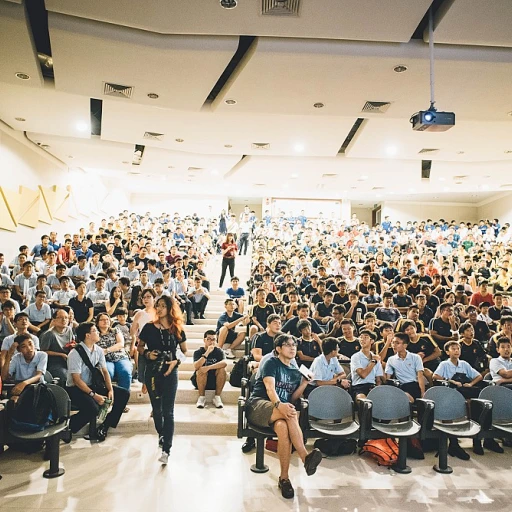
The Role of CIOs in Shaping the Future Workplace
Positioning the CIO as a Strategic Leader
The evolving workplace landscape necessitates a more strategic role for the Chief Information Officer (CIO), placing them at the forefront of the organization’s technological evolution. As businesses increasingly rely on technology to drive growth and adapt to changing market dynamics, CIOs are tasked with not just managing IT operations but also being pivotal in crafting and executing technology strategies that align with business goals. Today's enterprise environment is characterized by a significant shift toward digital transformation, demanding that CIOs exhibit strong leadership and technical expertise to succeed. They must leverage their understanding of emerging technologies, combining them effectively with the business direction to support competitive advantage. This requires a delicate balance of visionary planning and operational excellence. The role now extends to influencing not only technical teams but also cross-functional collaboration across the company. This involves integrating technology solutions that enhance productivity while ensuring security and operational resilience. CIOs who can champion innovation and foster a culture of agility within the company will find themselves essential in navigating these complex environments. CIOs are often seen as the bridge between technology and business operations, guiding technology officers, infrastructure directors, and other leaders toward a common vision. Their leadership demands a strategic mindset where data-driven decision-making plays a crucial role. By embracing policies that prioritize privacy and security, while also encouraging innovation and adaptability, CIOs contribute to the company's long-term success. Competence in these areas, combined with a solid background often necessitated by a bachelor's degree or equivalent experience, ensures that the CIO remains a central figure in meeting the evolving demands of the future workplace. For more insights on how to navigate the complexities of remote team management, explore these insights for success in building and sustaining high-performing teams.Embracing Digital Transformation: A CIO's Guide
Harnessing Digital Landscapes: A CIO's Vision
In today's business world, the role of the Chief Information Officer (CIO) is more critical than ever. As organizations strive to navigate the rapid changes driven by advanced technology, the CIO stands as the guiding force behind digital transformation strategies. This evolution entails moving from traditional IT management to becoming a central figure in shaping the digital future of a company. To stay ahead, CIOs must adopt a proactive approach in embracing emerging technologies. Their experience and deep understanding of technology operations allow them to craft and implement robust technology solutions that align with overall business goals. A strong team of technology managers and support staff is instrumental in executing these strategies, ensuring that the company remains competitive and operationally agile. Ensuring a seamless digital transformation requires CIOs to actively engage with cross-functional teams. This engagement is vital for crafting a comprehensive technology strategy that fulfills the business's needs. As the digital landscape evolves, so does the need for continuous learning and adaptation. Many chief officers are turning to platforms like LinkedIn for networking and professional development, gaining insights into global trends and successful digital transformation initiatives. The transition to a digital-first model also brings challenges, particularly in areas such as security, infrastructure resilience, and privacy policy management. A CIO's job description now includes fostering a cybersecurity culture and ensuring that the organization's Cookie and Privacy Policy are up-to-date and compliant with regulations, safeguarding the company and its clientele. A bachelor's degree in technology-related fields and continuous professional development are often prerequisites for CIOs. These roles are increasingly seen as full-time critical positions with directors or vice presidents of technology reporting to them. The rise of remote and hybrid work models further underscores the need for CIOs to adopt strong leadership techniques, providing support while championing policies that drive business operations successfully. For organizations eager to embrace the future, exploring innovative digital tools and frameworks can unlock significant value. To dive deeper into how digital tools are reshaping the HR landscape and business operations, read more about why HR needs to embrace online tools for the future of work.Navigating Remote and Hybrid Work Models
Redefining Workplace Distance: A New CIO Approach
Navigating the challenges of remote and hybrid work models has become a critical skill for any Chief Information Officer. As technology continues to evolve, CIOs need to leverage their technical expertise to ensure seamless business operations amidst these changing environments. Remote work, once a privilege, now stands as a necessity, and organizations must adapt. CIOs must innovate their technology strategy to address the unique demands that remote and hybrid setups bring to the table. Embracing emerging technologies will prove crucial in maintaining an effective IT infrastructure that ensures security and operational stability. Building strong cross-functional teams is a must. Effective communication and collaboration tools are vital for these teams to flourish, enabling departments to work together despite physical distance. Additionally, a seamless integration across diverse systems can significantly boost the job satisfaction and productivity of employees, resulting in enhanced business goals. The role of trust and privacy policies cannot be overstated. It is imperative for companies to establish robust policy cookie and privacy policy measures to protect sensitive data and reinforce user trust. Understanding these policies will become part of the job description for technology managers and directors as they join teams facing the new workplace realities. Lastly, the support system extended by a CIO will shape how the workforce perceives remote and hybrid roles. A focus on resilient infrastructures will arm businesses with the strength needed to adapt to future disruptions. The landscape of the modern office is evolving, and with it, the responsibility of a CIO. The balance between remote and on-site employees must be managed with a keen strategic vision, paving the way for successful business operations in the ever-changing digital workplace. To understand how technologies like HR software are contributing to this shift, you can explore more on exploring the potential.Data-Driven Decision Making for CIOs
Leveraging Data to Drive Strategic Decisions
In the digital age, the role of a Chief Information Officer (CIO) is pivotal in using data to steer company decisions. As businesses increasingly rely on data-driven insights, it’s essential for CIOs to harness the power of technology to inform strategy and operations.
Implementing a robust data strategy can transform how a company understands its market and internal processes. This requires the CIO to collaborate with cross-functional teams to ensure data accessibility and usability across the organization. A strong foundation in data management, security, and privacy policies is crucial for maintaining trust and compliance.
To effectively leverage data, CIOs must focus on:
- Data Infrastructure: Investing in resilient IT infrastructures that can support growing data needs is fundamental. This involves ensuring that systems are capable of handling large volumes of data quickly and efficiently.
- Technology Solutions: Selecting the right technology solutions that align with the company's business goals and technology strategy is key. This often requires a strategic evaluation process to ensure alignment with emerging technologies.
- Team Collaboration: Encouraging a culture of collaboration between data scientists, IT teams, and business units is essential for making informed decisions. A CIO with a solid technical background and management experience can guide these efforts efficiently.
- Continuous Learning: With the fast-paced evolution of technology, continuous learning is necessary. Acquiring up-to-date knowledge on the latest technologies and strategies can provide a competitive edge.
Utilizing data for strategic decision-making not only supports immediate business operations but also positions the company for future success. As the digital landscape evolves, a CIO’s ability to interpret and act on data will remain a cornerstone of their tech-savvy leadership.
Fostering a Culture of Innovation and Agility
Creating a Forward-Thinking Workplace Environment
In today's rapidly changing business landscape, fostering a culture of innovation and agility is more important than ever for Chief Information Officers (CIOs). By embracing technological advancements and encouraging a growth mindset, CIOs can facilitate a dynamic workplace that not only adapts but thrives amidst change. Developing a forward-thinking workplace requires an integrative approach that blends technology and strategic vision. A focus on cross-functional collaboration is pivotal. Encouraging collaboration between various departments such as IT, operations, and management will lead to the seamless integration of technology solutions across the company. This ensures that the diverse and complex needs of each team are met efficiently. CIOs play a crucial role in setting the tone for this environment. By promoting strong leadership and facilitating ongoing education and training, CIOs can empower their teams. Encouraging participation in continuous learning programs and staying updated with emerging technologies can sharpen the team's technical skills and inspire creativity across all levels of the organization. Moreover, the importance of a robust technology strategy cannot be overstated. CIOs must align their technology initiatives with business goals to drive performance. This involves crafting a strategic roadmap that predicts future trends and effectively leverages data for decision-making. Security remains a cornerstone of any technology strategy. Ensuring the integrity of IT infrastructures is essential to create a resilient and secure environment that supports operations efficiently, without compromising on privacy policy directives. Ultimately, fostering a culture of innovation and agility is an ongoing journey that requires a concerted effort from all levels of leadership. With the right balance of technology, clear communication, and continuous innovation, a company's potential for growth becomes boundless.Building Resilient IT Infrastructures
Fortifying IT Systems for the Evolving Business Landscape
In the rapidly changing world of business operations, building a resilient IT infrastructure is a non-negotiable priority for any company. The role of a Chief Information Officer (CIO) becomes instrumental as they work closely with various departments, such as management and support teams, to develop robust technology strategies tailored to meet business goals. To effectively maintain a reliable infrastructure, companies must focus on the following critical areas:- Strong Security Measures: A comprehensive security policy is essential to protect sensitive business information and maintain customer trust. CIOs must implement advanced security protocols and ensure regular updates and audits, re-evaluating measures in light of new threats.
- Adaptable Business Operations: Emerging technologies provide an opportunity to redesign operational frameworks for better efficiency and flexibility. Embracing solutions such as cloud computing and AI can help enterprises adapt to fluctuating market demands.
- Investing in Skilled Personnel: Hiring technology managers and officers with bachelor degrees or higher levels of expertise enables the company to draw on diverse experience. Training programs and workshops ensure that the team stays updated with the latest technological trends.
- Collaborative Efforts: Cross-functional collaboration ensures that all departments, from marketing to technical teams, work towards common objectives. The CIO is pivotal in facilitating these interactions, promoting a culture of openness and innovation.
- Regularly Updating Infrastructure: Frequent assessment of current IT infrastructure can pinpoint areas needing improvement. This proactive approach minimizes the risk of disruptions in business operations and supports the company’s long-term goals.












